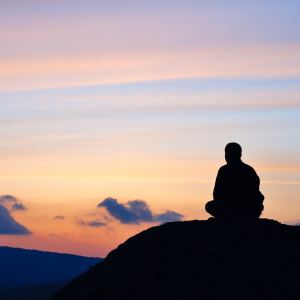Festivals
Over the years our community has adopted a tradition of celebrating the changes of the seasons. We call our celebrations nyida days, from the Tibetan words nyima (sun) and dawa (moon). Nyida days are celebrated on or near the days of the equinoxes and solstices. All four festivals are regarded as family-oriented celebrations.
Shambhala Day:
Shambhala Day is a celebration of the Shambhala New Year. The date is in accordance with the new year of the Tibetan calendar. Shambhala Centers around the world gather via a zoom link. The formal event is followed by festivities with families and friends.
Shambhala Day marks the beginning of a new year according to the Tibetan lunar calendar. As a time of renewal and “fresh start,” we are encouraged to celebrate together. We can cheer up. We can appreciate our lives even if we feel we might be living in an imperfect situation. Appropriately, the traditional greeting on this occasion is “Cheerful Shambhala Day!”
 Since the ancient days of King Gesar, and perhaps before, the Tibetan calendar has always been based on a great twelve-year cycle. Each year is named after an animal: mouse, ox, tiger, hare, dragon, snake, horse, sheep, monkey, bird, dog, and pig. In the eleventh century, a sixty-year cycle was introduced by combining the names of the animals with the five elements: wood, fire, earth, iron, and water.
Since the ancient days of King Gesar, and perhaps before, the Tibetan calendar has always been based on a great twelve-year cycle. Each year is named after an animal: mouse, ox, tiger, hare, dragon, snake, horse, sheep, monkey, bird, dog, and pig. In the eleventh century, a sixty-year cycle was introduced by combining the names of the animals with the five elements: wood, fire, earth, iron, and water.
Midsummers Day:
This festival is associated with summer solstice. It includes a lhasang, which purifies the environment and empowers the space by invoking awakened energy. This gathering is an opportunity for families and friends to enjoy some summer fun together.
Harvest of Peace:
This celebration happens on or around the time of the autumn equinox. It is an opportunity to gather, hear teachings by Sakyong Mipham Rinpoche, and celebrate the riches of our local cultures and heritage. The Sakyong addresses the international community via a live broadcast.
“……when we say “harvest of peace,” here, it is peace within ourselves. We feel like we belong, we feel like we actually want to participate in the community. That sense of peace in us is what is going to make a big difference. Not meditative stabilization and peace, we’re not particularly talking about that. But a sense of harmony. If we feel a sense of harmony with ourselves and the community, it’s going to naturally express itself. I feel that is going to be one of the important binding factors.”
Sakyong Mipham Rinpoche, Harvest of Peace address, 1999
Children’s Day:
Children’s Day is celebrated around the time of the winter solstice. Celebration of the winter solstice has its roots in many different cultures. The Shambhala community has drawn on traditional images associated with this time of year to create a distinctive and rich festival of our own. At a time when the weather begins to bear down upon us, we turn to family for celebration, creativity, and generosity. Because the solstice marks the time of year when the night is longest and daylight has waned, light is a special characteristic of this holiday.
While all four nyida days are regarded as family-oriented occasions, the winter holiday, Children’s Day, provides a special opportunity to express appreciation for and with our children.









